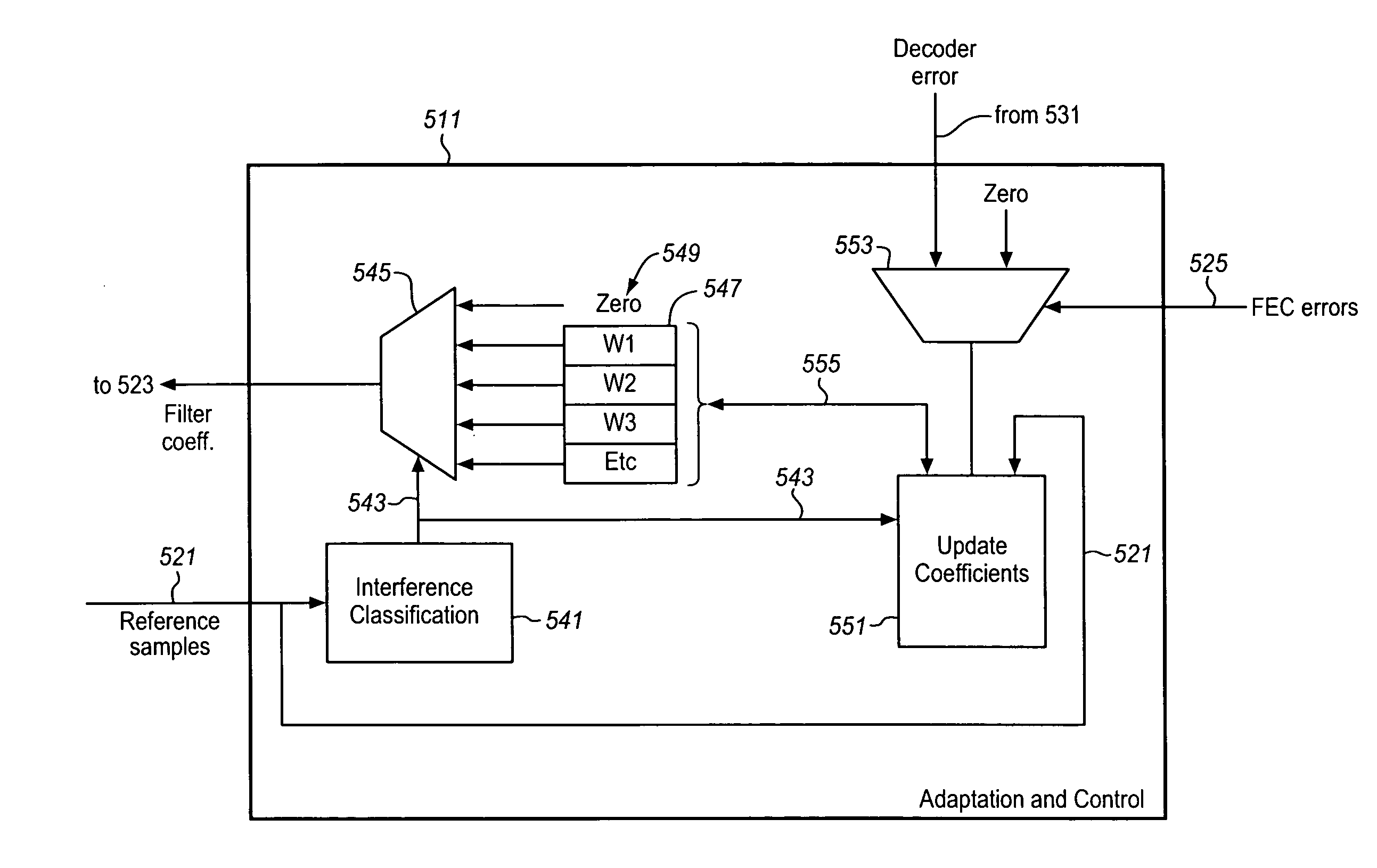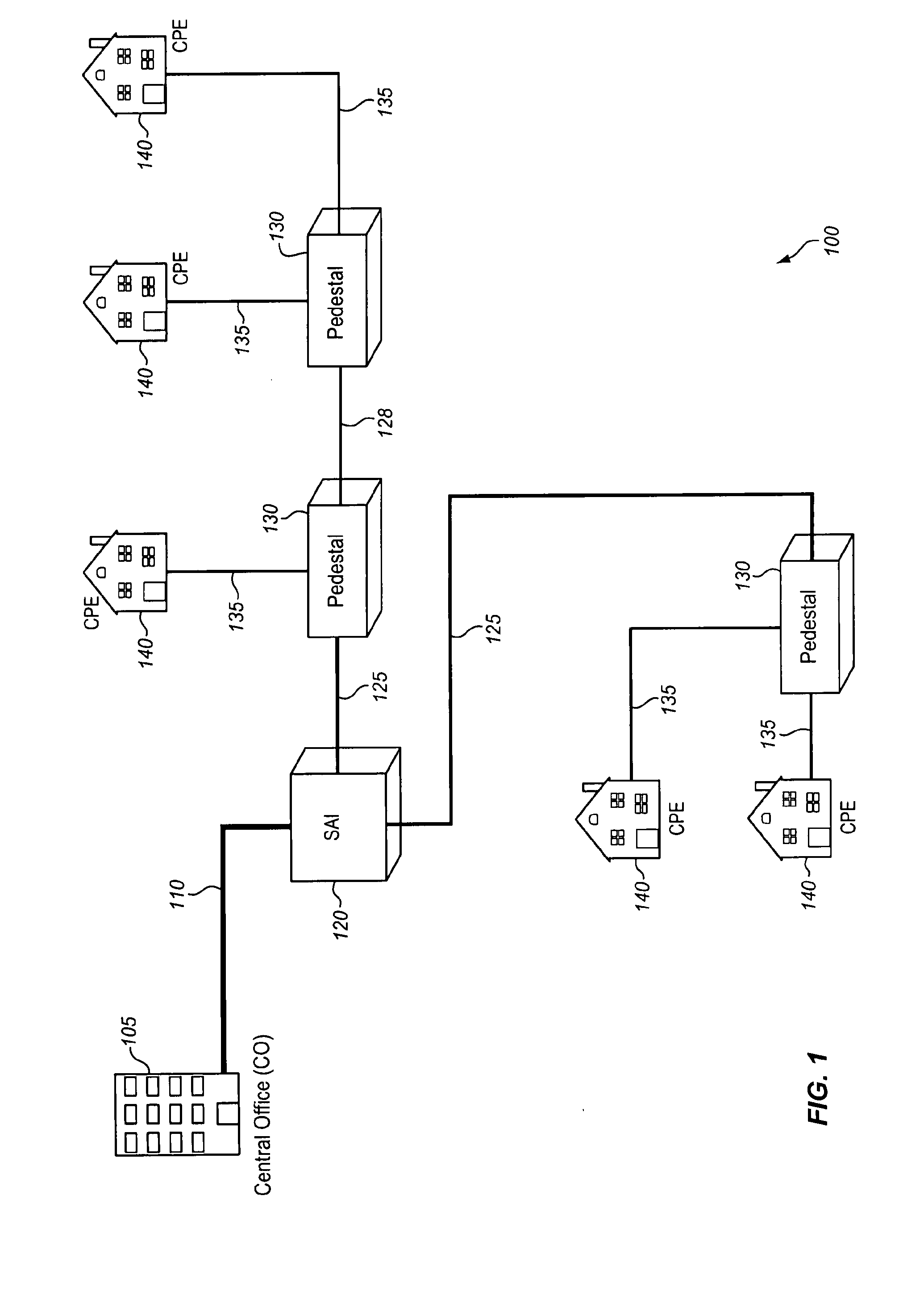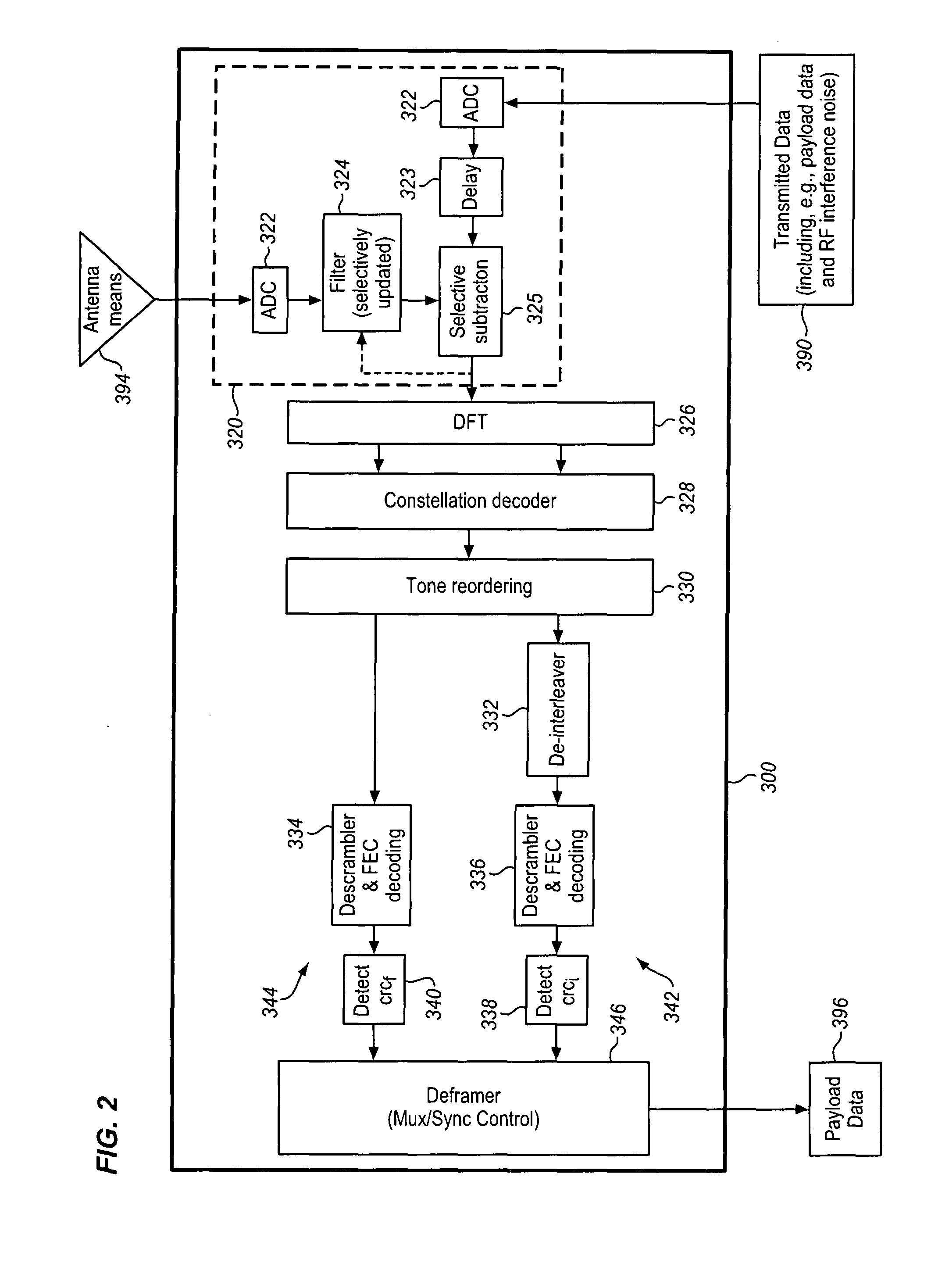Interference cancellation system
a cancellation system and interference technology, applied in the field of dsl (digital subscriber line) communications receivers, can solve problems such as interference, dsl users' problems, and contribute to a deterioration in dsl system performance, and other types of interference can interfere with data signals sent on dsl and other communication systems
- Summary
- Abstract
- Description
- Claims
- Application Information
AI Technical Summary
Benefits of technology
Problems solved by technology
Method used
Image
Examples
Embodiment Construction
[0021]The following detailed description of the invention will refer to one or more embodiments of the invention, but is not limited to such embodiments. Rather, the detailed description is intended only to be illustrative. The detailed description given herein with respect to the Figures is provided for explanatory purposes as the invention extends beyond these limited illustrative and exemplary embodiments.
[0022]Embodiments of the present invention apply to a modem or other communication device that also uses an antenna (or other structure functioning like an antenna). The modem receives data signals that are susceptible to noise from RF and, in some cases, other interference sources. The noise can affect the modem through unshielded and poorly shielded portions of any DSL loop to which the modem is coupled. The interference sources can include, for example, impulse noise, crosstalk and other man-made electronic radiation. The antenna collects data relating to the RF and other int...
PUM
 Login to View More
Login to View More Abstract
Description
Claims
Application Information
 Login to View More
Login to View More - Generate Ideas
- Intellectual Property
- Life Sciences
- Materials
- Tech Scout
- Unparalleled Data Quality
- Higher Quality Content
- 60% Fewer Hallucinations
Browse by: Latest US Patents, China's latest patents, Technical Efficacy Thesaurus, Application Domain, Technology Topic, Popular Technical Reports.
© 2025 PatSnap. All rights reserved.Legal|Privacy policy|Modern Slavery Act Transparency Statement|Sitemap|About US| Contact US: help@patsnap.com



